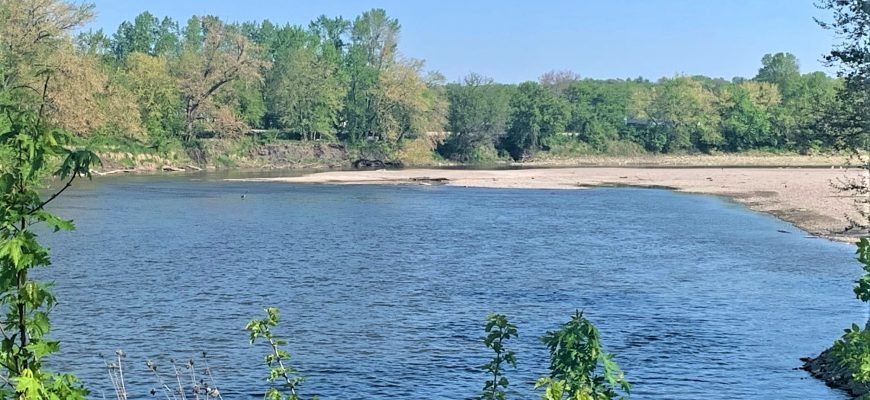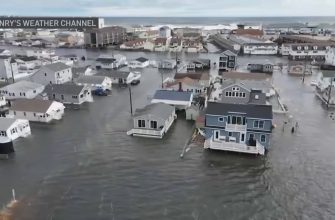The amount of farm fertilizers going into Iowa’s waterways diminished considerably with the widespread drought of recent years, according to newly released state data.
That data, which tracks the progress of the state’s Nutrient Reduction Strategy, received its first comprehensive update in years this week and is displayed in a series of online dashboards.
It shows that the amount of nitrate and phosphorus in the state’s rivers declined considerably in 2020 and 2021, the most recent years that are included in the dashboard.

However, the five-year averages for the fertilizer loads in the waterways were relatively unchanged since 2013, the year the state adopted the strategy.
That strategy has been criticized by environmental groups for its voluntary nature. There is no requirement for farmers to adopt the conservation practices it promotes.
Ag officials tout progress
“This comprehensive reporting shows that real progress is being made, but we are far from satisfied and will continue our efforts to scale up Iowa’s adoption of conservation practices,” Iowa Secretary of Agriculture Mike Naig said.
The number of acres devoted to bioreactors, saturated buffers and wetlands that help prevent fertilizers from reaching waterways from tiled farm ground increased more than 70% from 2013 to 2021 and stood at about 149,000. Nearly half of that increase was from 2021 alone.
That followed a Polk County “Batch and Build” initiative to speed the construction of the buffers and bioreactors to filter underground tiling.
“Polk County has certainly been a great partner and a leader in the installing of these practices, but practice implementation is ongoing throughout the state,” said Don McDowell, a spokesperson for the Iowa Department of Agriculture and Land Stewardship.
The fertilizers pose health risks to humans, can lead to harmful algae blooms and are responsible for the Gulf of Mexico Dead Zone.
The underground tiling has long been used to drain historically water-soaked land and can act as a swift conduit for nitrate — a key fertilizer for corn — into waterways. Nitrogen-containing commercial fertilizer and livestock manure are commonly injected into cropland in the fall or spring.
Phosphorus most often clings to soil and contaminates rivers via erosion. Growing cover crops can limit that erosion, and about 2.8 million acres were planted in 2021, according to a Survey of Agriculture Retailers estimate.
That’s equal to about 12% of the state’s total corn and soybean acres. The figure’s accuracy is unclear because in 2017, when the survey said there were about 1.6 million acres of cover crops in Iowa, a U.S. Department of Agriculture census said it was less than 1 million.
Still, those numbers have increased since 2013, when the USDA estimated there were about 380,000 acres of cover crop in Iowa.
“We recognize that there are a lot of local folks that are doing great work and doing innovative approaches to try to get conservation practices on the ground,” said Alicia Vasto, water program director for the Iowa Environmental Council, which is critical of the state’s strategy. “But until we control fertilizer application and manure application and mandate some other best practices like universal conservation practices, we’re not going to see actual water quality results.”
The group launched a new website on Wednesday that criticizes the Nutrient Reduction Strategy, which is now 10 years old.
Steady nutrient loads
The amount of phosphorus in Iowa’s rivers remained steady, on average, between 2013 and 2021, according to the newly released data.

The five-year average for total amount of nitrate was slightly higher in 2021 than in 2013, but a calculation that considers rainfall shows a 7% reduction in nitrate.
That flow-weighted calculation is meant to make different years comparable because there are such wide variations in nitrate load based on whether a year is arid or wet.
“There are a couple of things that look positive at first glance — like the drop in 2021 for the flow-weighted nitrate and the total nitrate load — but 2020 and 2021, those were drought years,” said Michael Schmidt, staff attorney for the Iowa Environmental Council. “If there’s less rain then there’ll be less nitrate. … 2012 was a big drought year, and the nitrate load in 2012 was one of the lowest years we’ve seen.”
There was widespread drought during all three of those years. Rainfall in 2012 was 9 inches less than normal. In 2020, rainfall was about 6 inches below normal, and 2021 finished above-normal after a very wet October but was dry for most of the year.
Whether the recent downward trend in nitrate loads will continue is unclear. An anticipated change to an El Nino weather pattern is expected to increase rainfall in Iowa.








